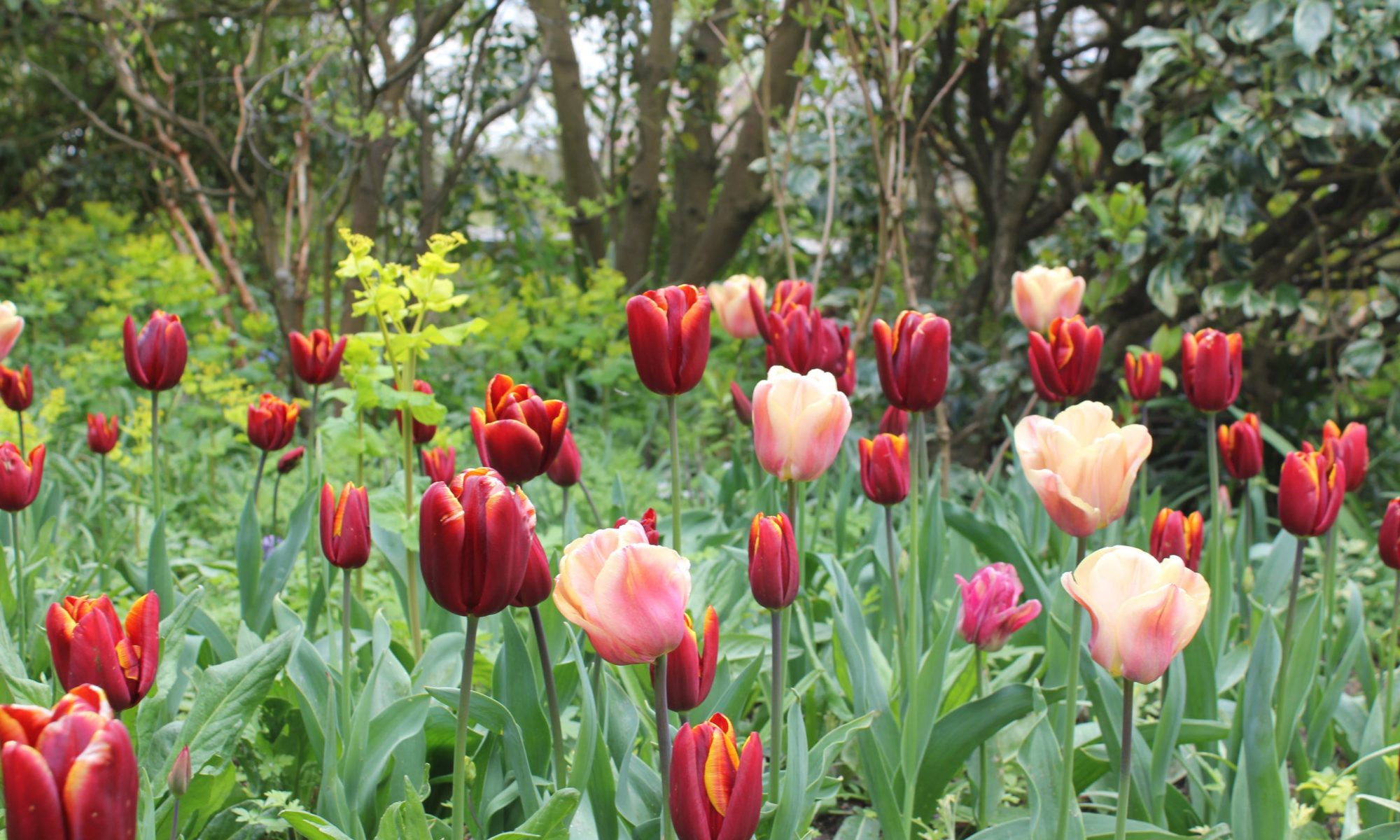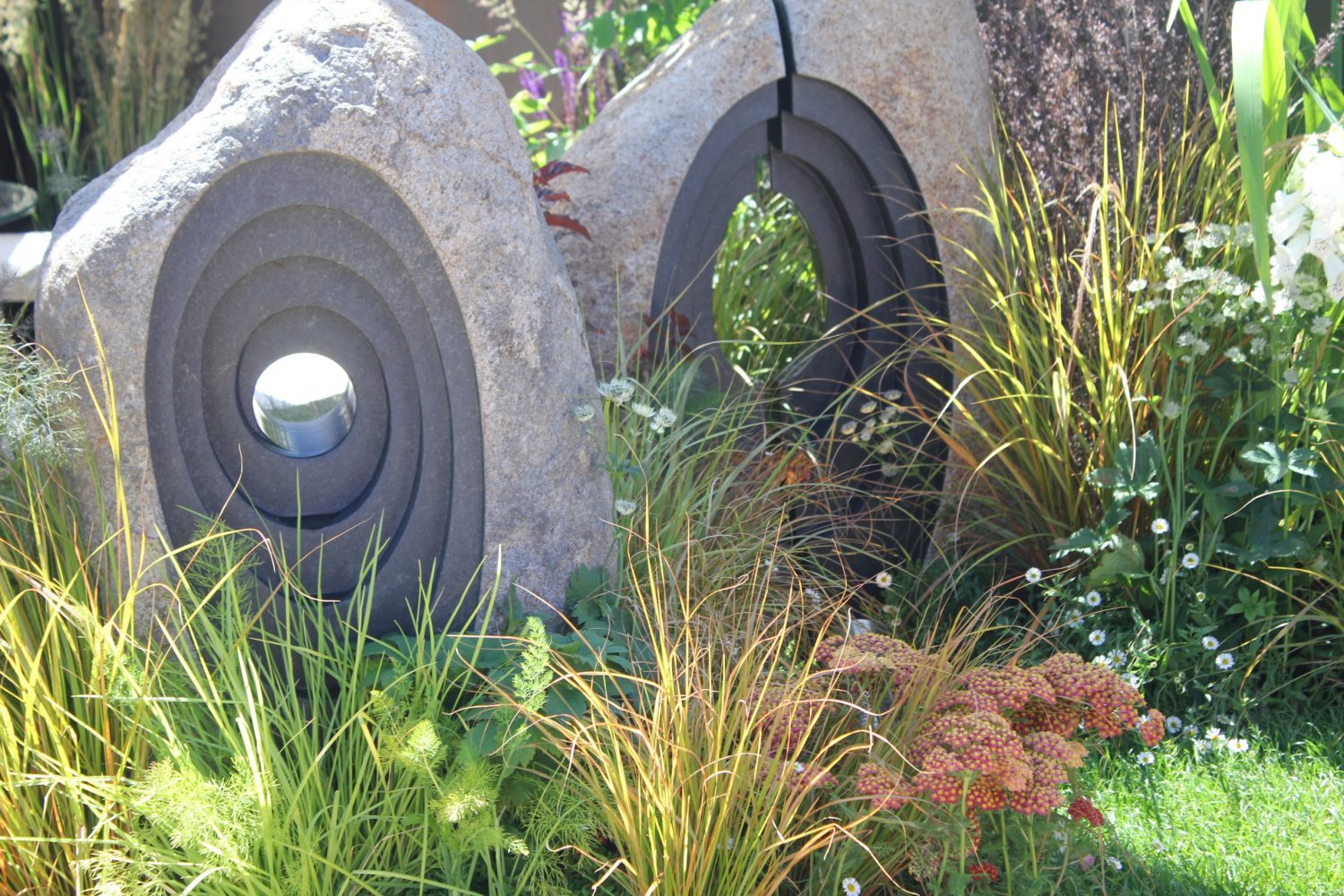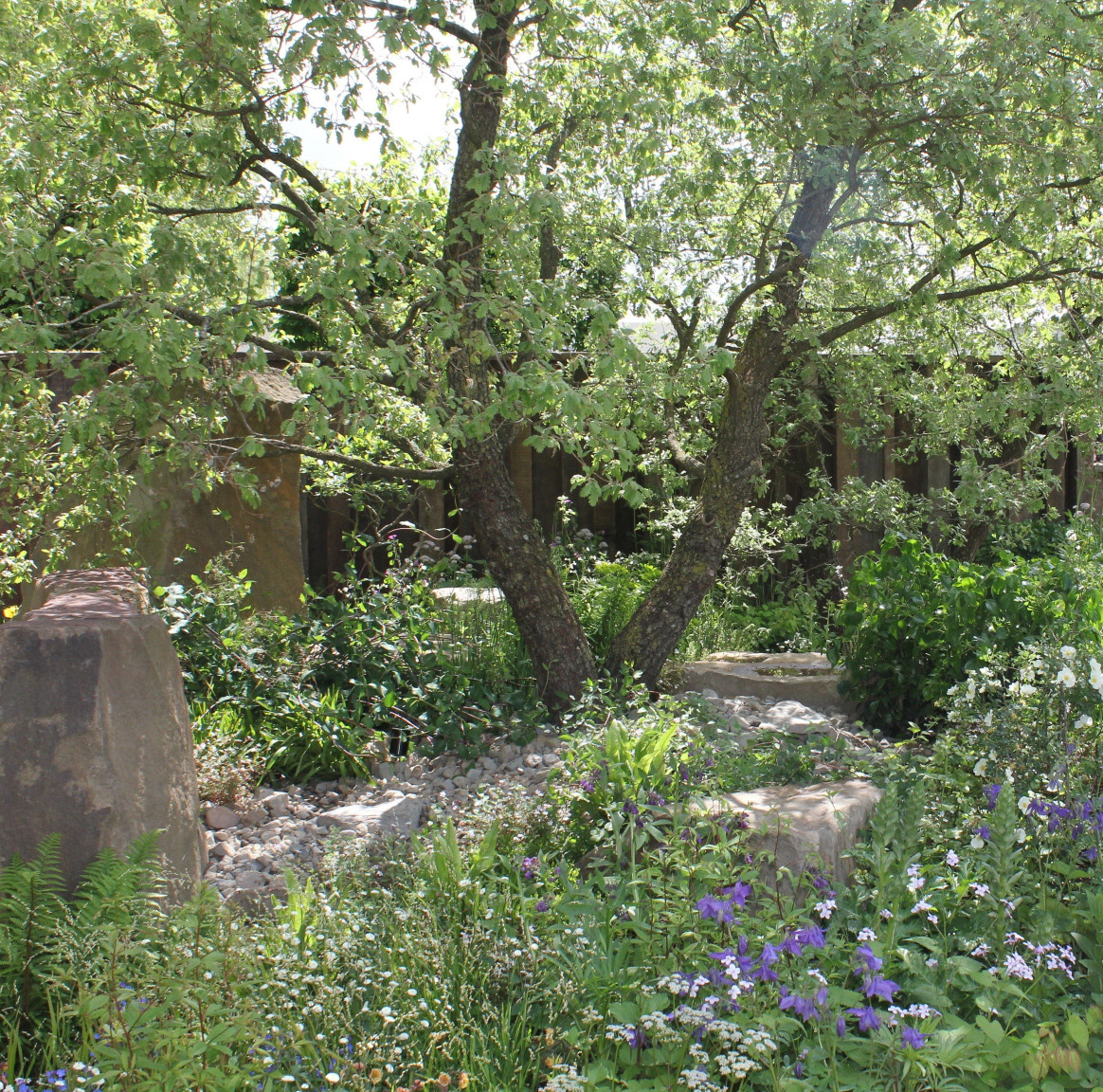This is what we’d all like, isn’t it? A good looking, interesting garden all year round. It is frustrating to look out at gaps or endless greenery. We want plants that will cheer us through the winter gloom, provide hope in the early spring, a burst of colour – or some cool shade, in the summer and a glorious glide through the autumn to brighten the darkening days. Impossible! It does sound like a tall order, I know, but it can be achieved; by choosing some good plants that do their job well, and a few that will (like many of us), just keep cheerfully trudging along all through the seasons.
All year interest is not the same as a low maintenance border, which is mainly evergreen, unvaried and unchanging, and sometimes a bit municipal looking. The difference is in the word ‘interest’. For borders to be interesting they need to change with the seasons: vary their leaf colour, come into flower, make seed-heads, berries, or have interesting bark. The evergreens still have an important place here, either in their own right, or as a foil for the performing plants – and to provide a framework for the border as a whole. It also calls for a little bit of forward planning and allowing enough space for plants to come and go through the seasons.
Successional Planting
Making sure that your plants perform in succession, so that there’s always something of interest at any given time, is easier said than done, but we can aim high. With a little luck – and some amenable plants, it is possible to have something of interest in the borders every month. It helps if you have good, wide beds so that three layers of plants can be squeezed in, that way there’s always something about to take over – the plant equivalent of one on, one off and one in the wash. There isn’t always room for this ideal scenario however, so this is where things like bulbs and annuals can come in, as they provide a burst of colour without taking up permanent space in the border. The other important issue is sometimes harder to be disciplined about (not that I speak from experience, you understand). That is: resisting the temptation to buy plants on impulse – then making sure that they will do a good job for us and not get lost in the garden, look underwhelming, swamp or be swamped by other plants. An understanding of your site and soil (and therefore which plants will grow well) will be vital, but making a proper list might help prevent the ‘sweet shop’ feeling when you go to the garden centre – there is a lot of choice; and plants, like sweets, can be hard to resist. Steel yourself.
Winter
Structure from evergreens and skeletons.
Winter and early spring can be difficult, bleak times and we need trusted friends, glimmers of hope and the comfort of reliable stalwarts to get us through it. We’re stuck inside more – and perhaps staring out at the garden, so plant for outlines and a good overall structure. This will hold the borders together and stop the garden looking empty – frosted effects can look beautiful on hardy evergreens and interesting topiary shapes. Many early flowering shrubs are scented – the flowers of early Viburnums and Daphnes aren’t showy, but their perfume makes up for this, so plant them near a path or by the front door, so that it isn’t just the cat that benefits from their uplifting fragrance. Early bulbs, like Snowdrops, Crocus and Narcissi will provide a joyful hint of spring.
Focal points
It is important to have focal points in the garden. They can come from garden features and ornaments, but some plants have that ‘look at me’ quality too. In summer dramatic blooms and exciting plant combinations can become temporary focal points, but I find that a relief from colour in the form of a well clipped evergreen shape, or a demure container helps to anchor a scheme, or provide rhythm and punctuation through the garden. Box balls are useful for this; on a larger scale and as backdrops, evergreens like Osmanthus, Viburnum (davidii and tinus) and Phillyrea are very effective.
Spring and summer
The ‘flower power’ months.
It is easier to fill the garden with colour in summer, but sometimes just the sheer choice can get overwhelming. Before you splurge on a gorgeous flowering plant, perhaps treat it as if it’s a candidate for a job and ask some questions: How long will it flower for? What do its leaves look like? Does the overall shape of the plant look good once the flowers have faded? You are probably seeing your potential purchase at its peak – it is wearing its best outfit for the interview and looking very promising; it may well have run out of ideas by the end of June. If you need some long lasting flowers, there are some plants that just don’t know when to stop: usually these are annuals, like Cosmos or tobacco plants, but there are some useful perennials too, such as Verbena bonariensis, which, if it likes you, will self-seed and pop up serendipitously all over your garden.
Containers
When there’s a temporary lull between the seasons, or an area of the garden that needs a bit of pepping up, then a well placed container full of flowers (bulbs, bedding or annuals) can work wonders, or at least tide you over for a while. Large pots and planters are a better bet in the summer months, as they won’t need watering quite so often – pots dry out very rapidly in hot weather and may need watering twice a day. The great thing about containers is that they can be moved out of the way once they’ve done their thing – or, if you (or your holiday stand-in) have overlooked them to death.
Autumn
By autumn we could be running out of steam, which is a shame, because our autumns seem to be getting longer and warmer, so the show can go on until the frosts arrive. There are some lovely late summer perennials to choose from and they team up well with grasses, which are also looking good now. The trick is to remember to leave room for them when you are planting up in the spring – the autumn can seem a long way off from there, especially when the garden centres are full of those irresistible early flowering plants. Don’t forget to plant lots of bulbs too.
That was a rather quick romp through the seasons, but it does pay to think ahead at this time of the year and make time to plan for the later seasons. Gardeners are always looking to the future; hopefully the seeds of some of that future are in the ground already – but if they’re not yet, don’t worry: with an idea of where the seasonal gaps are, a list of good plants, some good growing weather and a fair wind behind us (on second thoughts, no wind at all thanks), we can achieve the gardening holy grail and enjoy a good looking garden all year round. Enough of the theory, let’s get out there.

















